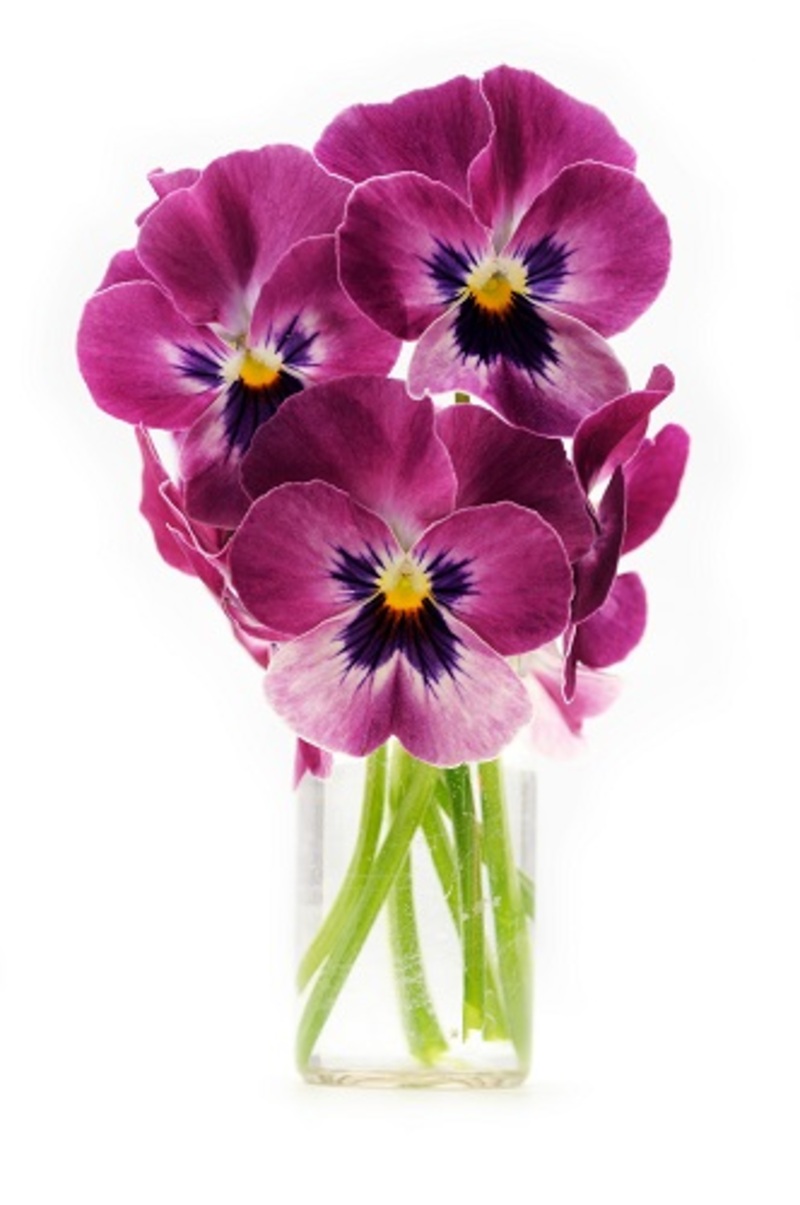Discover the Whispered Secrets of Your Birth Flower
Posted on 21/08/2025
Unlocking the Whispered Secrets of Your Birth Flower
Are you curious about the subtle messages and hidden meanings carried by your birth flower? From ancient legends to modern-day symbolism, each month's flower harbors fascinating tales, character traits, and heartfelt whispers--if only you know how to listen. Discover the secrets behind the flower associated with your birth month and unlock a deeper understanding of yourself and your connections to others in this insightful, SEO-optimized guide.

What Are Birth Flowers?
Before delving into the whispered secrets of your birth flower, let's first define what a birth flower is. Similar to birthstones, birth flowers are individual blossoms linked to each month of the year. These associations have roots in folklore, history, and Victorian floriography (the language of flowers). Each flower not only represents the month of your birth but also communicates hidden attributes, personality traits, and unique symbolism.
- Personal Symbolism: Your birth flower offers meaningful insights into your personality and potential.
- Cultural Heritage: Birth flower lore is woven into various traditions and celebrations worldwide.
- Natural Connection: Connecting with your birth flower strengthens your bond with nature and its cyclical patterns.
By exploring the secrets behind your birth flower, you participate in a story that bridges centuries, connecting you with generations past who also sought meaning in nature's subtle language.
The Birth Flowers for Each Month and Their Hidden Meanings
Every month is graced by one or more special blossoms, each carrying its own wisdom and symbolism. Which flower whispers to you?
January: Carnation & Snowdrop
- Carnation: Symbolizing love, fascination, and distinction, the carnation is one of the oldest cultivated flowers. Those born in January are said to be passionate and resilient, much like this enduring winter bloom.
- Snowdrop: Representing hope and rebirth in the heart of winter, the snowdrop brings a gentle promise of renewal--perfect for the start of a new year.
February: Violet & Primrose
- Violet: Associated with modesty, faithfulness, and remembrance, violets are noble yet unassuming. February-born individuals often emulate these virtues, loyal and true to their loved ones.
- Primrose: Signifying young love and new beginnings, primroses are harbingers of spring, reflecting hope and youthful energy.
March: Daffodil
- Daffodil: Bringing brightness after winter, daffodils are the true symbols of rebirth, hope, and joy. March's children are typically optimistic and exude cheerful energy wherever they go.
April: Daisy & Sweet Pea
- Daisy: As a symbol of innocence and purity, daisies denote simplicity and newfound joy. If you're born in April, you might embody youthful optimism and a fresh outlook on life.
- Sweet Pea: Associated with blissful pleasure and gratitude, sweet peas are given to bid farewell or say thank you, reflecting the warm, gentle spirit of April-born souls.
May: Lily of the Valley & Hawthorn
- Lily of the Valley: Delicate yet fragrant, this birth flower symbolizes humility, sweetness, and the return of happiness. Those born in May are often gentle, nurturing, and bring happiness to others.
- Hawthorn: Known for hope and supreme happiness, hawthorn blossoms whisper blessings of protection and prosperity.
June: Rose & Honeysuckle
- Rose: Universally considered the flower of love and passion, the rose is complex, admired, and multi-layered, just like many June-born individuals.
- Honeysuckle: Signifying bonds of love, honeysuckle represents the sweetness of companionship and emotional ties.
July: Larkspur & Water Lily
- Larkspur: This summer flower signifies positivity, dignity, and an open heart. If you celebrate your birthday in July, you may be charismatic and generous.
- Water Lily: Associated with purity and spiritual enlightenment, water lilies reflect a tranquil nature and deep intuition.
August: Gladiolus & Poppy
- Gladiolus: Representing strength, moral integrity, and remembrance, the gladiolus whispers tales of courage. August-born people are known for their determination and strong will.
- Poppy: Symbolizing imagination and eternal sleep, poppies reflect a vivid inner life or creativity.
September: Aster & Morning Glory
- Aster: With its star-shaped blooms, the aster stands for wisdom, faith, and elegance. September individuals are often practical, thoughtful, and admired for their insight.
- Morning Glory: This flower is a sign of renewal and affection. Morning glory reminds us that every day is a new beginning.
October: Marigold & Cosmos
- Marigold: Known for its vibrant orange and yellow hues, marigold symbolizes passion, creativity, and warmth. October-born people are often vibrant, creative souls.
- Cosmos: Signifying peace and harmony, cosmos flowers whisper soothing secrets of balance.
November: Chrysanthemum
- Chrysanthemum: This blossom stands for loyalty, honesty, and joy. If you were born in November, you may be steadfast, genuine, and bring happiness wherever you go.
December: Narcissus & Holly
- Narcissus: Associated with hope and good wishes, the narcissus brings light in the depths of winter. December borns are cheerful, optimistic, and inspire hope in others.
- Holly: Symbolizing protection and defense against negativity, holly's evergreen nature aligns with resilience and strength.
The Ancient and Modern Significance of Birth Flowers
The tradition of assigning a birth flower for each month spans cultures and centuries. It was during the Victorian era that floriography--the art of communicating through flowers--truly blossomed. Flowers carried encoded messages when spoken words failed. Today, knowing your birth flower meaning offers a unique layer of self-understanding and a creative way to celebrate your individuality.
- Gift-Giving: Presenting someone with their birth flower conveys a personalized, thoughtful sentiment.
- Weddings and Celebrations: Incorporate birth flowers to handcraft meaningful bouquets, boutonnieres, or decor that echo personal stories.
- Home and Garden: Growing your own birth month flower fosters a connection with your heritage and seasonal rhythms.
Whether used in rituals, as garden inspiration, or for thoughtful gifts, birth flowers connect us to history, nature, and each other.
How to Embrace & Celebrate Your Birth Flower
Wondering how to incorporate the secrets of your birth flower into your daily life? Here are simple yet meaningful ideas to bring the magic of birth flowers into your world:
- Personal Jewelry: Wear charms or pendants featuring your birth flower as a reminder of your unique strengths.
- Home Decor: Display fresh or artificial arrangements of your birth flower, or select art prints for your living space.
- Gardening: Plant your birth month flower in your garden or on your balcony to connect with its whispered wisdom.
- Tattoo Art: Commemorate your birth flower with a delicate floral tattoo design.
- Mindfulness Rituals: Meditate with the image, scent, or meaning of your flower to align with its characteristics.
- Gift-Giving: Create custom gifts featuring your loved ones' birth flowers for birthdays, anniversaries, or to express gratitude.
By weaving your birth flower into the fabric of everyday life, you keep its whispered secrets close and its wisdom within reach.
The Whispered Secrets: What Your Birth Flower Says About You
For centuries, flowers have been used to convey messages of the heart, express emotions wordlessly, and celebrate life's milestones. But what deeper message does your birth flower hold in its petals?
- Inner Qualities: Each flower reflects particular virtues--whether it's resilience, kindness, courage, or wisdom.
- Life's Purpose: Birth flowers often resonate with your mission or calling, guiding you toward your true path.
- Relationships: They can reveal how you connect with others, the type of energy you bring, and the love you share.
Listening to your birth flower's secret means being attentive to your strengths, open to your challenges, and ready to blossom into your best self.

Frequently Asked Questions About Birth Flowers
- Why do different countries or cultures have different birth flowers for the same month?
Birth flower associations can differ due to local flora, traditions, and historical meanings. Always consider both traditional Western and regional flower calendars for a richer experience! - Can I have more than one birth flower?
Many months feature two birth flowers, each with unique meanings. Embrace whichever flower speaks to you most! - How accurate are birth flowers to personality?
While not scientific, flower symbolism beautifully complements astrological, numerological, and other personality systems--offering inspiration and self-reflection. - Can I give birth flowers as gifts?
Absolutely! A bouquet of someone's birth flower is a thoughtful, personalized gesture.
Conclusion: Let Your Birth Flower's Secrets Blossom
Your birth flower is much more than a beautiful bloom. It carries centuries of stories, hints at your inner world, and whispers secrets about your journey ahead. Whether you plant its seeds, wear it as a talisman, or simply let its meaning inspire your daily choices, the whispered secrets of your birth flower are a gentle reminder to honor your unique essence. Embrace its symbolism, celebrate your birth month with pride, and let your personal flower's wisdom flourish in your life.
Ready to discover even more floral wisdom? Stay tuned to our blog for in-depth guides and tips on birth flower meanings, seasonal gardening, and the rich tapestry of floral symbolism that colors our world!
Latest Posts
Insider Tips on Extending Your Poinsettias' Bloom
Expose 3 easy-to-follow methods for preserving your cherished blooms
8 Lesser-Known Sunflower Facts That Will Intrigue You






